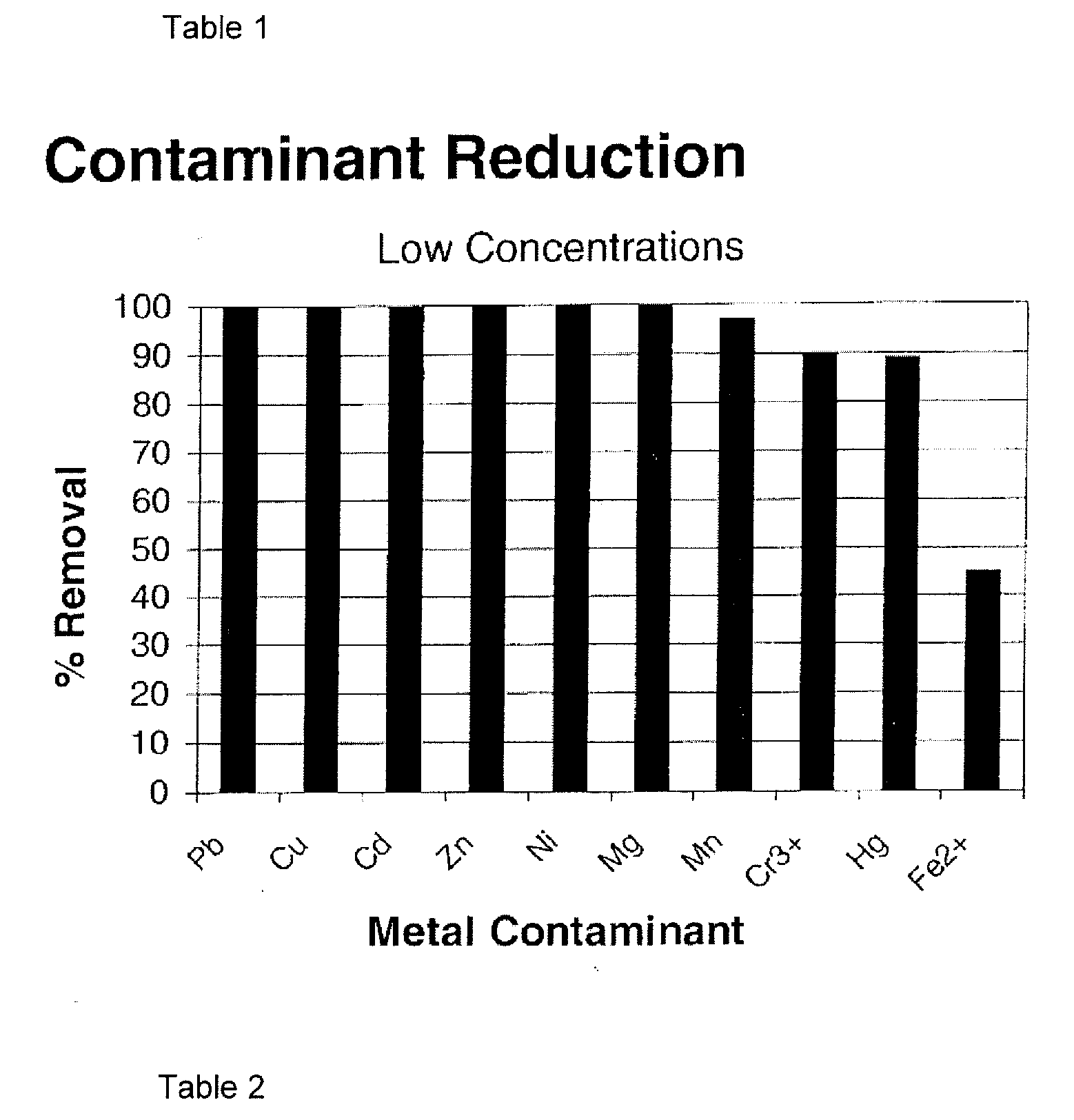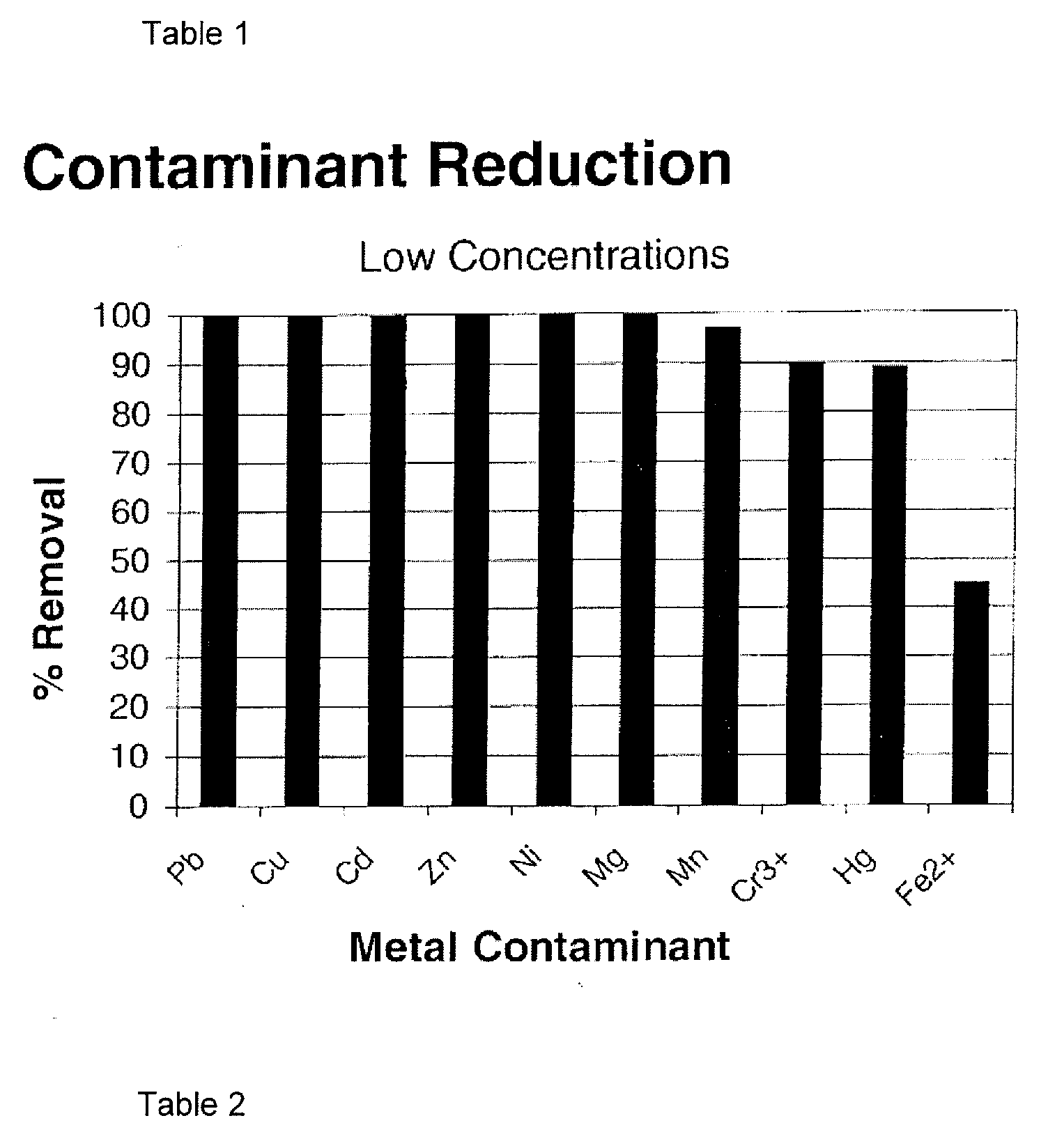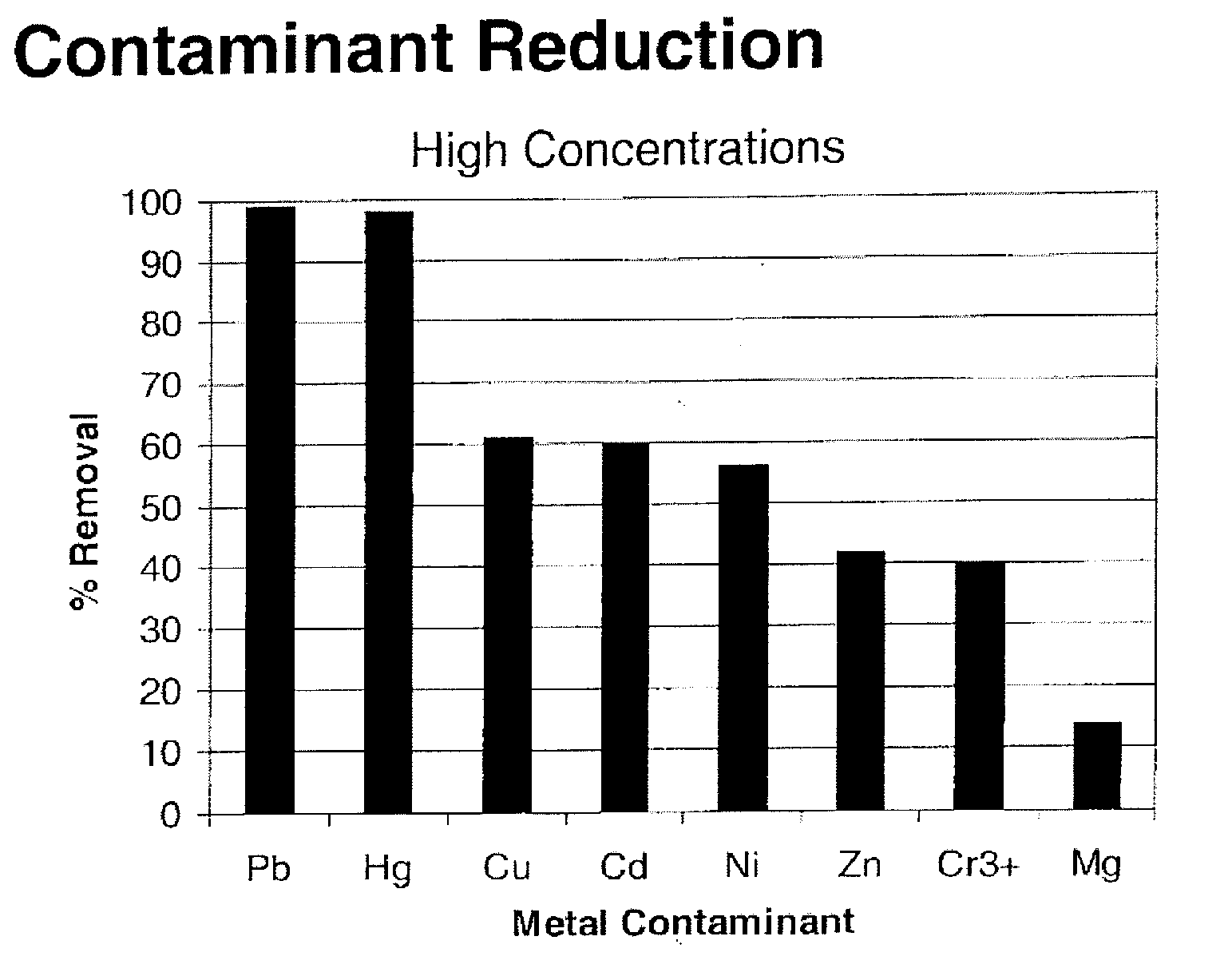Impregnated carbon for water treatment
a technology of impregnated carbon and water treatment, which is applied in the direction of water/sewage treatment by ion exchange, cation exchanger materials, separation processes, etc., can solve the problems of high reagent and energy requirements, toxic metal ions that may be contained in water, and incomplete metal ion removal
- Summary
- Abstract
- Description
- Claims
- Application Information
AI Technical Summary
Benefits of technology
Problems solved by technology
Method used
Image
Examples
example 1
[0037]In a 150 liter volume ribbon blender a batch of polymer impregnated carbon was made using the following formulation:[0038]a) activated carbon (20×50 mesh): 10 kg,[0039]b) 25% PAA (Lubrizol-Carbopol-ISX-1794): 15 liters (4.28 kg dry basis),[0040]c) glycerol: 300 ml (0.33 kg), and[0041]d) water: 3 liters
Activated carbon granules were loaded into the ribbon blender. In a separate reaction vessel, PAA, glycerol and water in the above quantities were mixed. This mixture was added to the granulated activated carbon (hereinafter “GAC”) in the ribbon blender under continual agitation. The speed on the agitation was maintained at 20 rpm. The mixture (now in a paste-like form) was agitated for 30 minutes and dropped out of the ribbon blender onto a tray. The paste was extruded through a roller mill into one centimeter thick sheets on trays, and these trays were subjected to heat in a conveyor dryer at 230° C. The temperature of the paste-like material in the trays was measured using an ...
example 2
[0049]A trial on impregnating GAC with PAA was conducted in a 130 liter volume Littleford Ploughshare Dryer (Littleford Day, Inc. P.O. Box 128, Florence, Ky. 41022-0128). This state-of-the-art dryer has a mechanically fluidized ploughshare action which agitates and individualizes each particle, thereby continuously exposing tremendous particle surface for drying. The vessel has a heated jacket where hot oil can be circulated to attain the temperatures of approximately 495° F. or 250° C. The particles constantly contact one another, and the heated interior wall of the jacketed Littleford vessel further hastens the drying process. Additionally, the Littleford Ploughshare dryer is equipped with independently-operated, high shear choppers that reduce the particle size of the lumps or agglomerates thereby exposing un-dried materials and ensuring that the particle interiors are thoroughly dried. Combined action of the ploughshare and choppers create a fluidized bed, shortening the drying ...
example 3
[0055]Impregnated carbon made pursuant to the instant invention was tested for its ability to remove metallic contaminants such as lead, copper, cadmium, zinc, nickel, manganese, magnesium, chromium, and iron from water. The impregnated carbon was tested with the metal contaminants at both high concentrations (approximately 50 to 100 parts per million) and at low concentrations (wherein the concentrations of metal contaminants in the water were in the parts per billion range).
[0056]The impregnated carbon made according to the present invention was packed in a column. 100 bed volumes of metal solutions of low concentration, approximately 0.5 ppm (6.6 ppb for mercury (Hg)) at pH 7 were passed through the column. The filtrate was analyzed to determine the amount of metal reduction in the water. Table 1 shows the percent removal for various metals at low concentrations. Following the low concentration run, 100 bed volumes of metal solutions of high concentration, approximately 50 ppm (6...
PUM
 Login to View More
Login to View More Abstract
Description
Claims
Application Information
 Login to View More
Login to View More - R&D
- Intellectual Property
- Life Sciences
- Materials
- Tech Scout
- Unparalleled Data Quality
- Higher Quality Content
- 60% Fewer Hallucinations
Browse by: Latest US Patents, China's latest patents, Technical Efficacy Thesaurus, Application Domain, Technology Topic, Popular Technical Reports.
© 2025 PatSnap. All rights reserved.Legal|Privacy policy|Modern Slavery Act Transparency Statement|Sitemap|About US| Contact US: help@patsnap.com



